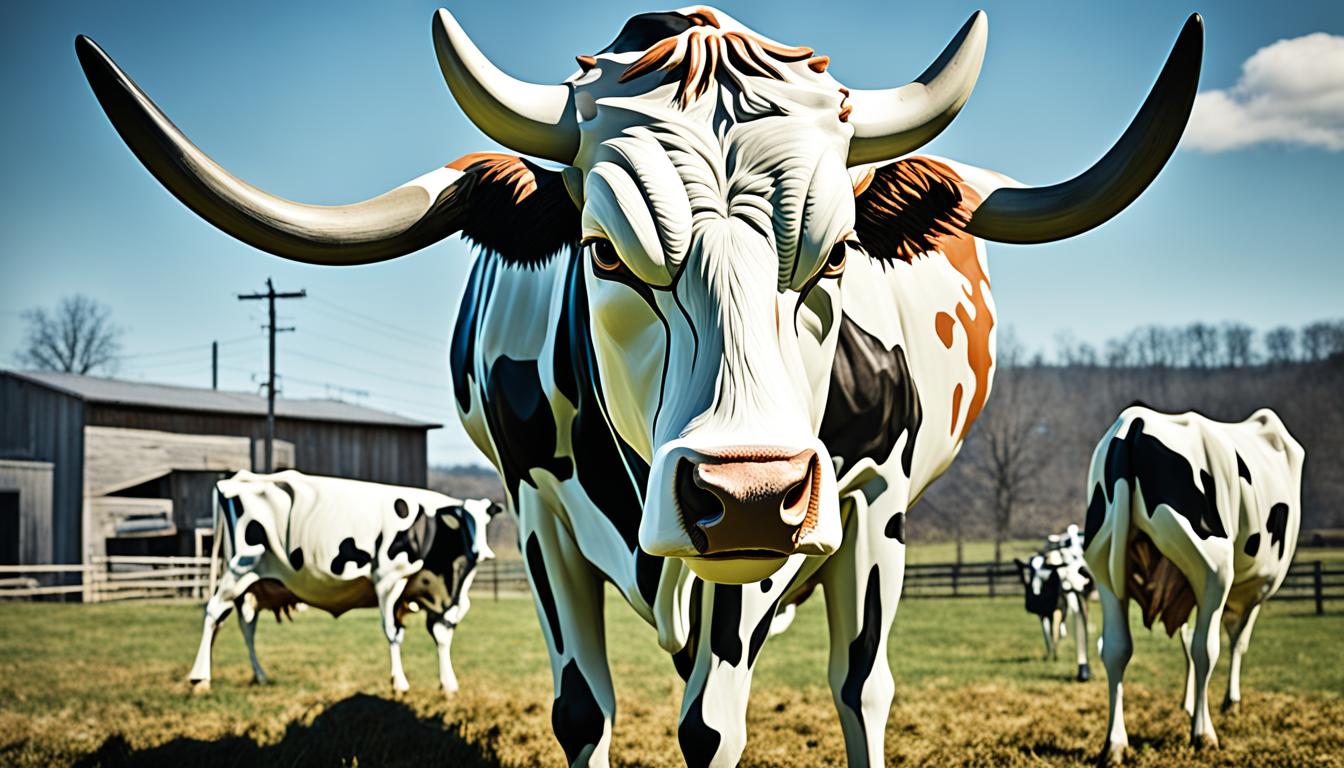Mad cow disease, known as BSE, is a brain disease that harms cattle. It’s caused by a strange protein, affecting the animal’s nervous system. Cows with this disease might have trouble walking, be very nervous, or act aggressively.
In the 1970s, this disease started in the UK. It spread when cows ate meal mixed with the BSE protein. For people, eating beef with the protein can cause vCJD, a severe brain disorder that can be deadly.
But, today, the chance of getting vCJD from beef is very slight. Many steps have been taken to keep mad cow disease in check. These include checking cattle for BSE, getting rid of sick animals, and making sure risky parts don’t go into food.
Unfortunately, there’s no exact cure for vCJD yet. Yet, scientists are looking into stem cell therapy and other ways to treat brain diseases. Their work aims to improve care for illnesses similar to vCJD in the future.
Key Takeaways:
- Mad cow disease is a neurological disease in cattle caused by an abnormal prion protein.
- Consumption of beef contaminated with the prion can lead to vCJD in humans.
- The risk of contracting vCJD from eating beef today is very low.
- Countries have implemented measures to control and prevent mad cow disease.
- Stem cell therapy is being explored as a potential treatment for neurodegenerative disorders like vCJD.
Symptoms and Diagnosis of Mad Cow Disease
Mad cow disease is also known as bovine spongiform encephalopathy (BSE). It affects cattle, leading to signs like trouble moving or standing. Cows might also act nervous or very aggressive. Sadly, this illness can cause death within a few weeks or months. When people get variant Creutzfeldt-Jakob disease (vCJD) from eating infected beef, their symptoms can be severe and complex.
The first signs of vCJD in humans are often mistaken for depression. People may start avoiding their family and friends, feel anxious, and have trouble sleeping. As the disease progresses, it can cause coordination problems, muscle spasms, incontinence, and even vision or movement loss. Other signs include memory loss, confusion, and strange changes in appetite and emotions.
Diagnosing vCJD is very tough and is usually confirmed after a person has died. Doctors use brain tissue tests for this. Before that, they might do other tests like MRI scans, EEGs, spinal taps, and genetic tests to check for symptoms and rule out other issues.
Symptoms of Mad Cow Disease and vCJD
| Mad Cow Disease (Cattle) | vCJD (Humans) |
|---|---|
| Trouble walking or standing | Severe depression |
| Nervousness | Withdrawal from family and friends |
| Aggressive behavior | Anxiety |
| Eventual death | Irritability |
| Trouble sleeping | |
| Loss of coordination | |
| Muscle twitches or spasms | |
| Incontinence | |
| Vision loss or blindness | |
| Loss of movement | |
| Memory loss | |
| Confusion | |
| Changes in appetite and emotional responses |
Prevention and Outlook for Mad Cow Disease
Every country is focused on stopping mad cow disease. They do this by testing cattle for BSE, getting rid of sick animals, and by not allowing risky materials in our food. These actions help cut down the chance of the disease spreading.
Consumers can also do their part to lower their risk of vCJD. It’s wise to not eat beef from places with mad cow disease. Choosing steak over ground beef is a good idea. And don’t worry, milk is not linked to vCJD.
The chance of getting vCJD from blood is very low. The FDA stops people who might have been near mad cow disease from giving blood. Though there’s no cure yet, scientists are looking at new ways, like using stem cells, to fight the disease.
Much progress has been made in lowering the risk of mad cow disease. Most places now have very little risk of vCJD. By working together, we can keep our food safe and protect everyone’s health.

